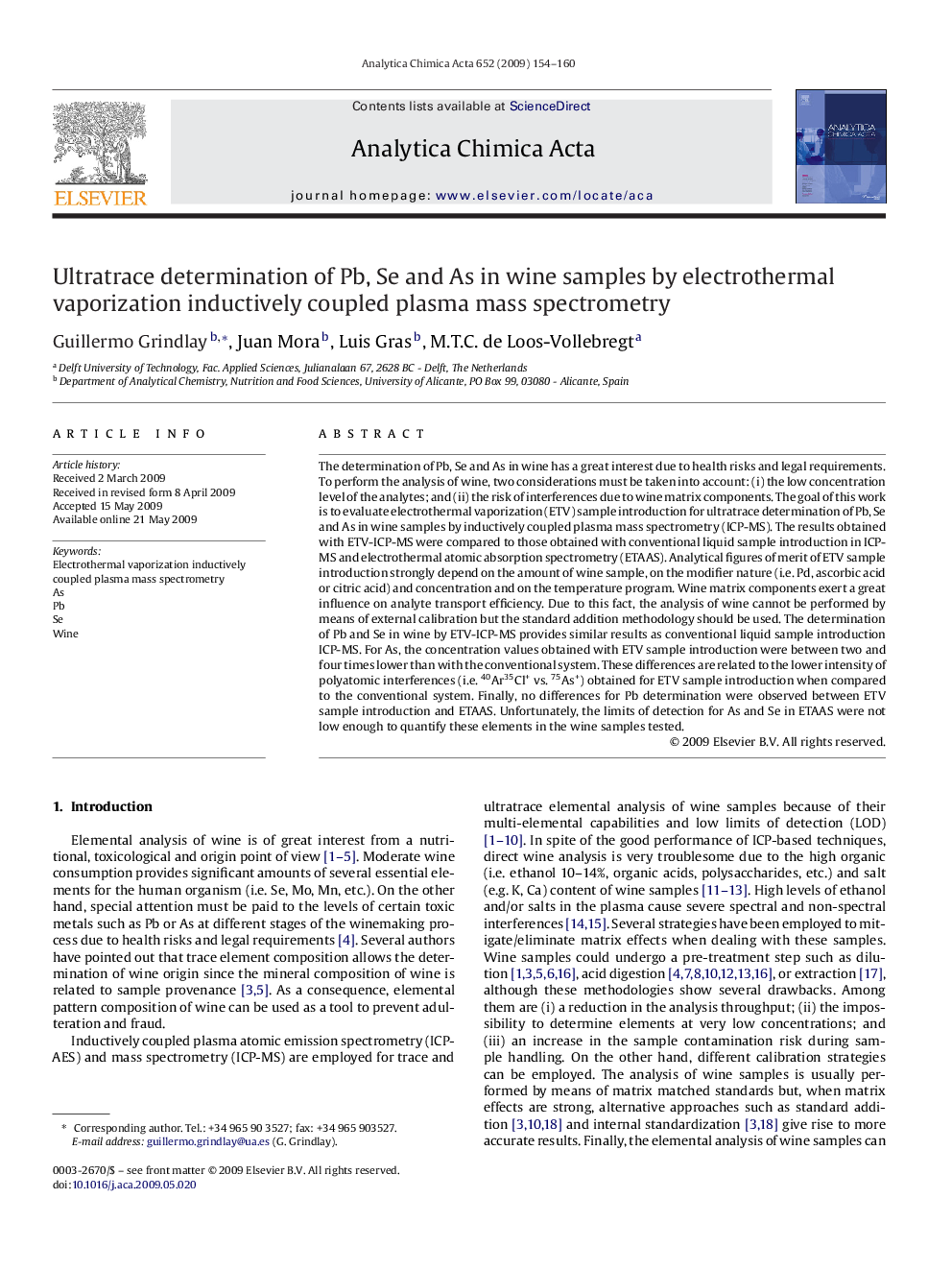| Article ID | Journal | Published Year | Pages | File Type |
|---|---|---|---|---|
| 1168277 | Analytica Chimica Acta | 2009 | 7 Pages |
The determination of Pb, Se and As in wine has a great interest due to health risks and legal requirements. To perform the analysis of wine, two considerations must be taken into account: (i) the low concentration level of the analytes; and (ii) the risk of interferences due to wine matrix components. The goal of this work is to evaluate electrothermal vaporization (ETV) sample introduction for ultratrace determination of Pb, Se and As in wine samples by inductively coupled plasma mass spectrometry (ICP-MS). The results obtained with ETV-ICP-MS were compared to those obtained with conventional liquid sample introduction in ICP-MS and electrothermal atomic absorption spectrometry (ETAAS). Analytical figures of merit of ETV sample introduction strongly depend on the amount of wine sample, on the modifier nature (i.e. Pd, ascorbic acid or citric acid) and concentration and on the temperature program. Wine matrix components exert a great influence on analyte transport efficiency. Due to this fact, the analysis of wine cannot be performed by means of external calibration but the standard addition methodology should be used. The determination of Pb and Se in wine by ETV-ICP-MS provides similar results as conventional liquid sample introduction ICP-MS. For As, the concentration values obtained with ETV sample introduction were between two and four times lower than with the conventional system. These differences are related to the lower intensity of polyatomic interferences (i.e. 40Ar35Cl+ vs. 75As+) obtained for ETV sample introduction when compared to the conventional system. Finally, no differences for Pb determination were observed between ETV sample introduction and ETAAS. Unfortunately, the limits of detection for As and Se in ETAAS were not low enough to quantify these elements in the wine samples tested.
